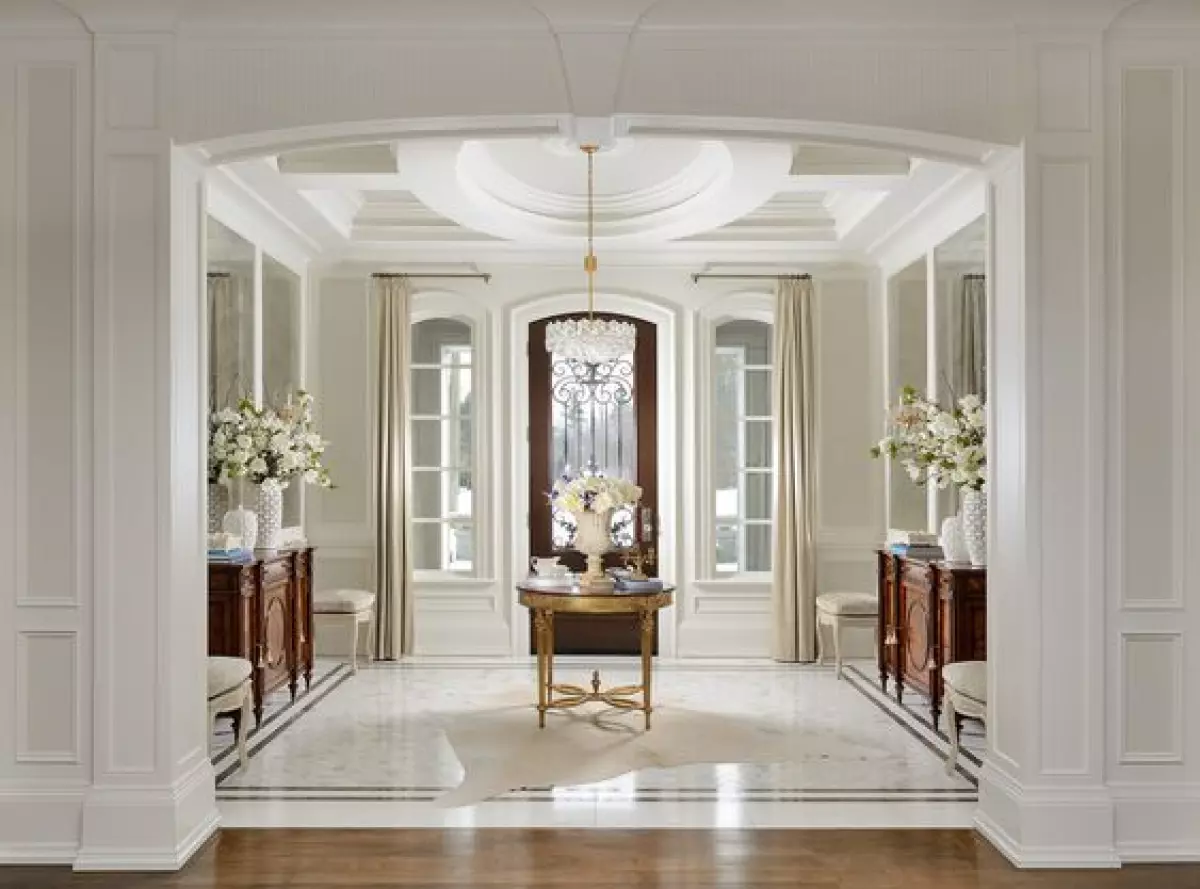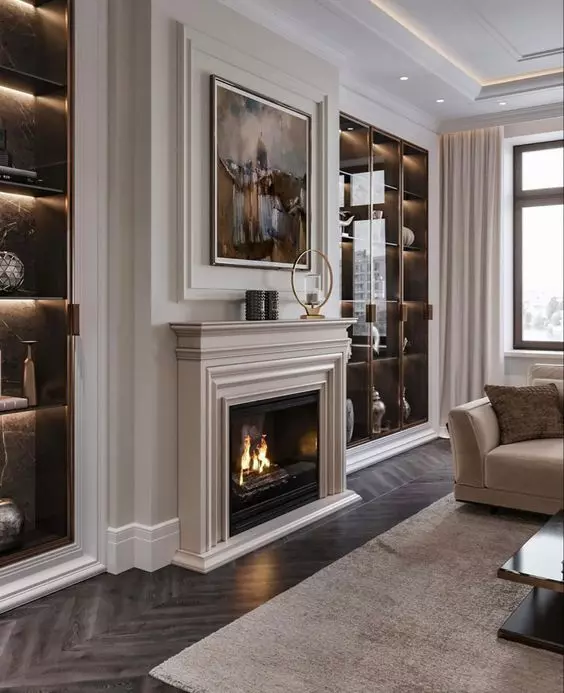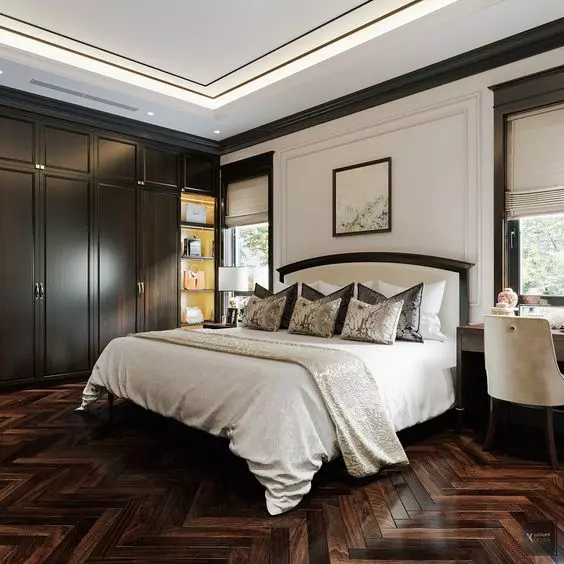Colonial interior design is a captivating and elegant style that traces its origins back to the early American settlers. Inspired by their European heritage, these settlers beautifully incorporated their ancestral influences into the construction and design of their new homes. This unique style is marked by its attention to detail, fine craftsmanship, and the use of locally available materials.
Over the centuries, colonial design has evolved and adapted to different regions, giving rise to distinct sub-styles like British Colonial, French Colonial, and Spanish Colonial. Each variation showcases a delightful fusion of traditional aesthetics with the local culture and environment. Today, colonial interior design remains popular and versatile, offering a timeless appeal that seamlessly integrates into modern homes.
Origins of Colonial Interior Design
Colonial style interior design emerged in the 18th century when European settlers brought their design influences to America. They combined the simplistic lines and features of their European roots with grand elements found in American farmhouses, resulting in a unique form of interior design that holds a significant place in history. The foundation of colonial architecture and design can be traced back to the Pilgrim settlers who arrived in North America in the early 17th century.
During the era of colonization, British colonial interior design gained popularity, particularly in Asia. This style emphasized a laid-back and breezy atmosphere, creating a perfect ambiance for relaxation and leisure. Colonial style decor originally featured rustic, hand-crafted aesthetics, heavily influenced by the settlers' European ancestors. As the design spread and evolved, it incorporated a diverse range of cultural influences.
Key Elements of Colonial Interior Design
Architectural Features
In my experience with colonial interior design, architectural features are governed by formality and symmetry. The square, symmetrical shapes found in colonial architecture create a sense of balance and proportion. Interiors often feature centrally located entrances, hallways, and staircases, with rooms positioned around them. The use of painted wood surfaces, paneling, ornate dado, and plaster can be seen in both the interior and exterior of colonial-style homes.
 Image by Pinterest
Image by Pinterest
Furniture
Craftsmanship and simplicity are key when it comes to furniture in colonial-style homes. Incorporating well-crafted, thrifted, or new pieces like sofa tables, end tables, coffee tables, chairs, benches, stools, and sideboards can bring authenticity to your design. The furniture should highlight the skill of the maker and the use of natural materials.
 Image by Pinterest
Image by Pinterest
Textiles
When selecting textiles for colonial interior design, I recommend introducing a mix of light and dark tones to create contrast. Light sheer fabrics are often chosen for window treatments, evoking a feeling of a cool oasis in a tropical setting. Upholstery, cushions, and rugs can feature various textures and patterns inspired by classical influences.
 Image by Pinterest
Image by Pinterest
Color Palette
The color palette in colonial style interior design revolves around a contrast of light and dark tones. Soft white paint is commonly used for walls, while deeper, richer colors such as shades of mahogany, teak, and ebony can be found on furniture pieces. Accents can include pops of color with tropical or exotic influences through textiles and accessories, but maintaining a sense of balance and harmony is crucial.
Incorporating Colonial Style Into Modern Homes
Modern Colonial Living Rooms
To create a modern colonial living room, striking a balance between traditional and contemporary elements is essential. Mix classic architectural features like crown molding and fireplaces with modern furniture that boasts minimalist design and clean lines. Incorporate natural materials such as wood and wicker to add warmth and texture to the space. And for an authentic colonial feel, include at least one key element of modern colonial interior design that ties the room together.
 Image by Pinterest
Image by Pinterest
Contemporary Colonial Kitchens
When updating a colonial kitchen with a contemporary touch, consider keeping the original cabinetry and woodwork while opting for modern materials like quartz or granite countertops. Replace old hardware with sleeker, modern options and add a fresh coat of paint to brighten the space. A classic color palette of creams, warm yellows, and muted greens can evoke a timeless feel, while stainless steel appliances blend modern convenience with traditional elegance.
 Image by Pinterest
Image by Pinterest
Bedrooms With Colonial Touches
To create a bedroom with colonial touches, focus on essential elements such as a comfortable and charming bed, complemented by soft and cozy textiles. Add a canopy or four-poster bed as a dramatic focal point, accompanied by crisp white linens and embroidered accents for a touch of luxury. Traditional patterns like paisley or floral work well with the colonial style. Layer textures through area rugs, upholstered furniture, and window treatments to create an inviting and restful atmosphere. Strive to bring the charm of a bygone era into a modern and functional living space.
 Image by Pinterest
Image by Pinterest
Famous Examples of Colonial Interior Design
Colonial-style interior design is experiencing a resurgence, with many individuals drawn to its adaptability and timeless appeal. Some notable examples worth mentioning include:
-
Governor's Palace in Williamsburg: Showcasing a classic example of 18th-century colonial design, this space astounds with antique furnishings, rich fabrics, and exquisite wood moldings that truly capture the essence of this style.
-
Winterthur Museum and Estate in Delaware: A treasure trove of colonial furnishings and fabrics, this museum offers breathtaking interiors that represent the finest examples of 18th and 19th-century American colonial design.
-
Modern "Colonial Revival" Style Houses: Several popular home magazines feature impressive interior design projects that expertly blend classic colonial elements with contemporary furnishings and color palettes.
By studying these famous examples, anyone interested in incorporating colonial-style interior design into their own home can gain valuable inspiration and insight into this timeless and elegant style.
Choosing the Right Colonial Style for Your Home
When selecting the perfect colonial style for your home, consider the style of furniture, type of flooring, and color palette that would best complement the overall aesthetic. Keep in mind that colonial-style homes focus on practicality and genuine craftsmanship, which should be reflected in your design choices.
Use a soft and muted color palette, as simple colors were common during colonial times. Add pops of color with decorative accents like pillows or artwork while still maintaining an overall colonial feel.
For furniture, opt for pieces that exhibit classic 18th-century elements. Upholstered furniture, crystal chandeliers, and beautifully crafted wooden pieces are all hallmarks of the American Colonial style. Don't be afraid to mix and match pieces to create a unique and curated feel that reflects your personal taste.
Flooring is another crucial aspect of colonial interior design. Consider hardwood floors with wide planks, hand-scraped textures, or reclaimed wood options for a charming and historically accurate look.
Adding indoor plants is an excellent way to bring warmth and elegance to your colonial-style home. Greenery balances out the muted color scheme and brings a sense of life and vitality to your space.
Don't forget to incorporate classic colonial elements such as wall moldings, wallpapered rooms, and antique accessories. These subtle details truly create a cohesive and inviting atmosphere reminiscent of the colonial era.
The key to achieving the perfect colonial style interior design is to focus on simplicity, practicality, and craftsmanship. By thoughtfully considering your furniture, flooring, color palette, and decorative accents, you can create a warm and welcoming home that reflects the timeless beauty of colonial design.
Frequently Asked Questions
If you liked this post about colonial interior design, follow us on Pinterest to stay updated on the latest interior design news!












